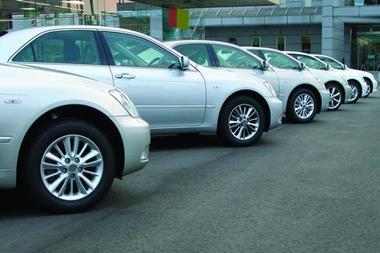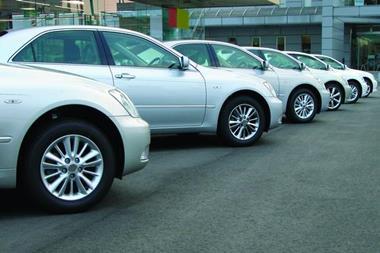Profitability went from bad to worse for most motor insurers in 2009. But EMB’s latest analysis of FSA returns, in tandem with recent industry data, shows that far from buckling under the strain of market pressures, many insurers are now starting to turn a corner
The release of the FSA returns for 2009 confirms what commentators have suspected for many months. Last year was horrid for motor insurers, with combined operating ratios (COR) exceeding 119%. Personal motor, with its unpleasant cocktail of market pressures, moved beyond 120%, but commercial motor was also well in the red at 110%.
Despite such numbers, however, the news is not terminally bad, and there are clear signs that insurers are taking up the challenge to return to profit. They have quite some way to go to get there, and it certainly won’t happen overnight, but at least they appear resolved to address the situation.
The good news …
There was one positive development for insurers. Earned premium income was up 2% in 2009, even before the full effect of price increases implemented later in the year appeared in the results.
The market has of course been saying that prices should rise for well over a year; more like two or three, in fact. Taking that first step and potentially stepping out of line with the rest of the market has always been the stumbling block. But towards the end of 2009, while too late to have any substantial effect on the FSA returns, a large portion of the market said enough was enough.
After a severe intake of breath about price increases of around 20% announced by some leading players, most have followed suit. The Confused.com/EMB Car Price Index, for example, showed market increases of 6.9% and 4.3% in the final quarter of 2009 and the first quarter of 2010, respectively, and an annual increase since the end of March 2009 of 14.3%.
Insurers have also taken proactive measures to get their administration expenses under control, and the overall expense ratio has fallen from 30.3% to 29.2%. Inevitably, these figures include some enforced headcount reductions, but they also show how insurers have begun taking a real hold on their outsourcing arrangements, making sure these deliver better value. Policy acquisition expenses have also been reduced as further pressure has come on the broker channel.
… and the not-so-good news
On the downside, the results would have been even worse if prior-year reserve releases had not surpassed the mid-year expectation. While still substantially down on previous years, releases accounted for 2.4% of net premium, split 1.0% on the larger personal motor sector and 7.2% on commercial.
These figures may have softened the blow somewhat in 2009, but there is no disguising the fact that, for some companies, reserves have largely disappeared, putting even more reliance on good technical pricing and underwriting profitability.
Many insurers will, however, have seen this coming and will already be factoring it into their pricing calculations. Less predictable, and potentially more dangerous for all insurers, is the claims environment.
Claims expenses rose by 7% from 5.5% to 5.9% of net earned premium in 2009 as insurers were presented with higher volumes and more complex claims to deal with, as well as the continuing threat from increasing fraudulent claims.
Rising claims have become a fact of life for insurers. Bodily injury (BI) claims in particular have been growing steadily for some time, and during 2009 the cost of BI claims per vehicle year increased on average by more than 10% for claims of under £100,000 in size, according to EMB’s research. As well as an increased number of claims being reported, the number of claimants per claim has also been rising strongly.
Yet the continuing growth of the claims management sector offers little hope of respite for insurers any time in the near future. Datamonitor reported in UK Personal Injury Litigation 2009 that the number of companies offering claims management services increased by over 50% between 2008 and 2009, from 1,409 to 2,232.
As well as the numeric growth, the market leaders have become increasingly aggressive in their efforts to win business. National Accident Helpline, the current number one, has increased its advertising budget by around 10% each year since 2005, and in 2008 the top five companies collectively spent around £18m on advertising, much of it on high-impact television campaigns.
Larger claims, particularly those above £5m, are also on the increase, fuelled by judicial support for settlements through periodic payment orders (PPOs). More than half of such claims are expected to be settled this way in the future, at an additional cost to insurers of around 40%. Early evidence of PPO settlements also suggests that a higher proportion of awards are being made to young adults, resulting in higher overall costs to insurers because of the relatively long life expectancy of many award recipients.
Further clouding the claims picture are the Ministry of Justice reforms for BI claims under £10,000, introduced at the end of April. While it is difficult to say what the financial impact will be, one of the concerns that has been raised is that the strict time restrictions involved will allow more fraudulent claims to slip through the insurers’ net. Balanced against this is the potential for lower legal expenses arising from the fixed-cost structure associated with the process.
Looking forward
Where does all this leave insurers for 2010 and beyond? With all the post-election uncertainty in the economy and the threats to stability from elsewhere, investment income is unlikely to be a significant factor. Reserve releases too, despite a stay of execution in 2009, surely have to be virtually discounted.
Increasingly, it looks like success for motor insurers in the short- to medium-term relies on getting back to the basics of more accurate and up-to-date risk assessment, effective monitoring of developing trends, and solid operational management.
In those respects, insurers at least deserve a pat on the back for doing something about the situation. They are not out of the woods yet, and we expect the industry COR to still linger around 114% in 2010. But there are some lessons to be learned from recent market casualties regarding administrative efficiency and the dangers of under-pricing risks.
In terms of getting their own houses in order, the reduction in expense ratios is a start. There will be a need to go further, and more tough decisions will need to be made to make operations as lean as possible without sacrificing customer service.
One area where investment may be required is fraud prevention. The industry as a whole has already done a lot to fight it, but results to date suggest that individual companies may have to raise their game even further.
Prices are moving in the right direction but, given the scale of the current and projected losses, they have to continue heading north – probably to the tune of at least 15% in 2010.
Of course there will always be a need to be in tune with the market in the combination of prices, terms and add-ons. The impact of price comparison sites on renewal churn and on penalising mispricing has ensured this, particularly as more than half of car insurance policies in 2009 were bought through an aggregator. Further consideration on renewal versus new business strategy will also be required.
But the greatest challenge undoubtedly lies in managing claims and building ever more accurate and predictive models, particularly for BI. There is no turning back from the more claims-savvy and litigious market that the UK has become. Some salvation may come from the Jackson Review proposals to abolish referral fees and to encourage claimants to manage and control legal costs, but even if these materialise, they are a good two to three years off. In the meantime, the credit hire organisations that had been to some extent sidelined have re-tooled and re-equipped to attack the market.
Who would be a motor insurer? On the face of the 2009 results and what looks like an improved but still loss-making 2010, who indeed? Many motor insurers have gone to the edge – some alas have gone over it by choice or otherwise. Having taken the first steps in the other direction, the rest of the market needs to keep their foot on the pedal to keep up the momentum. IT
Naeem Ali is a consultant at EMB, the actuarial and business consultancy






































No comments yet